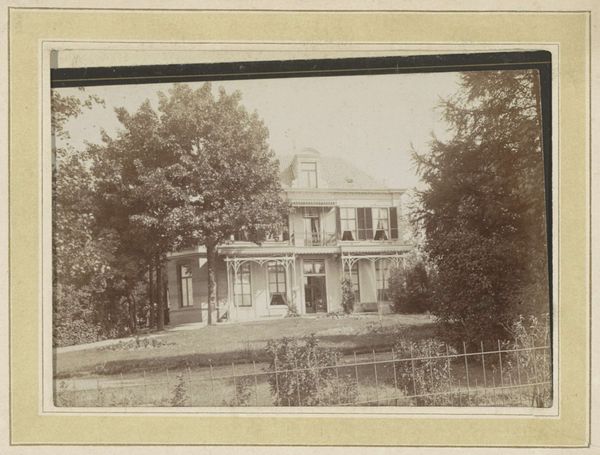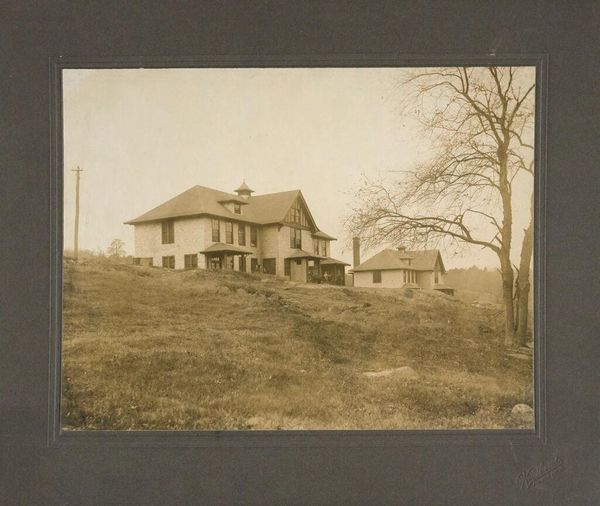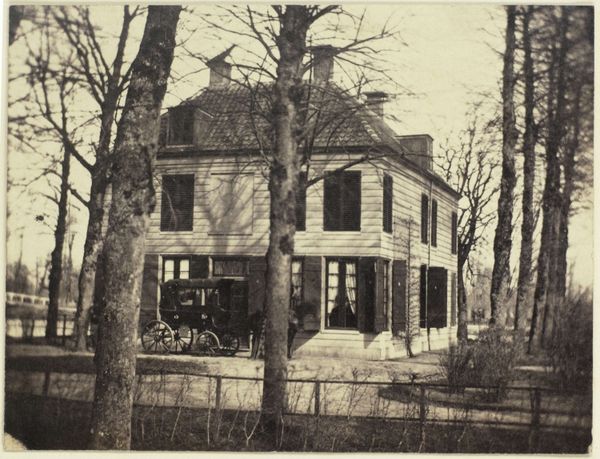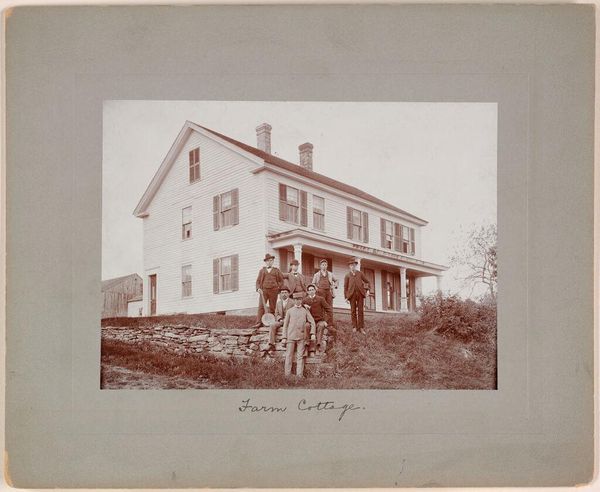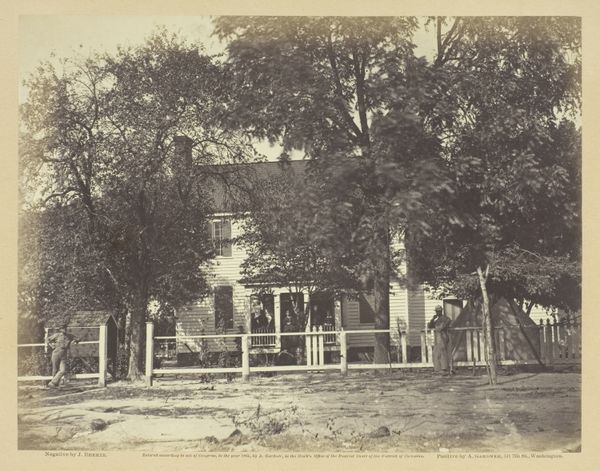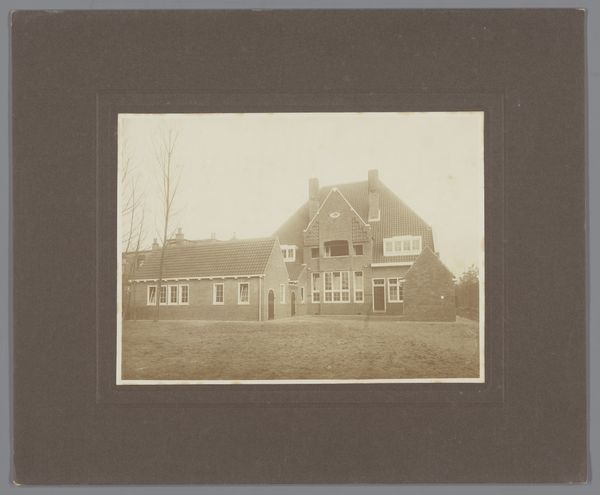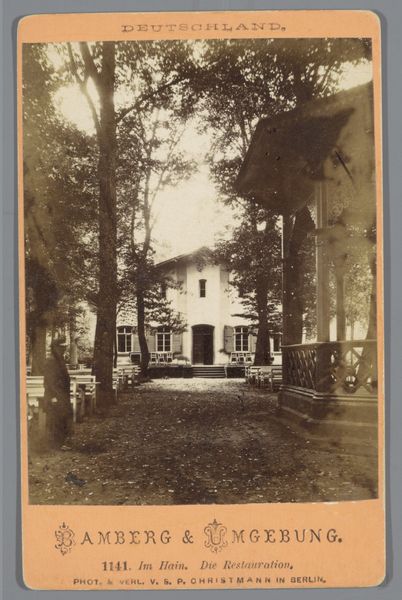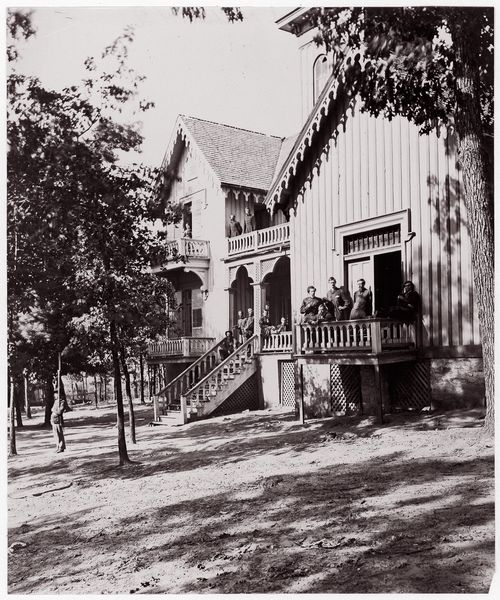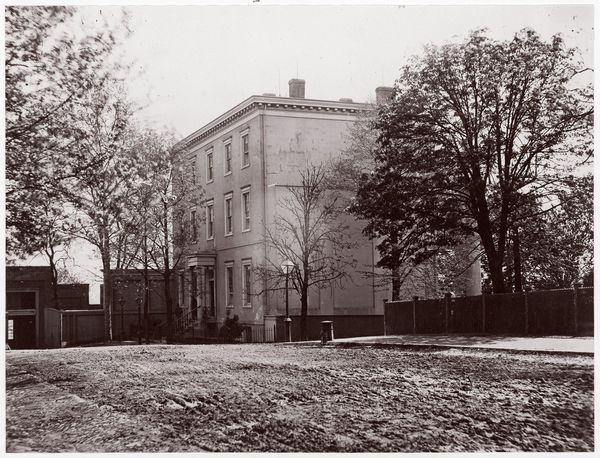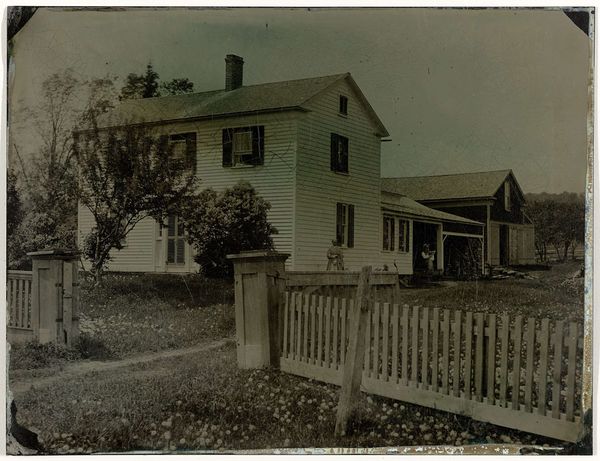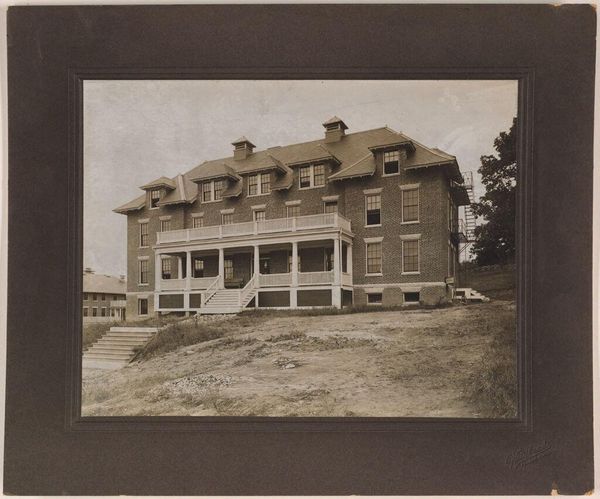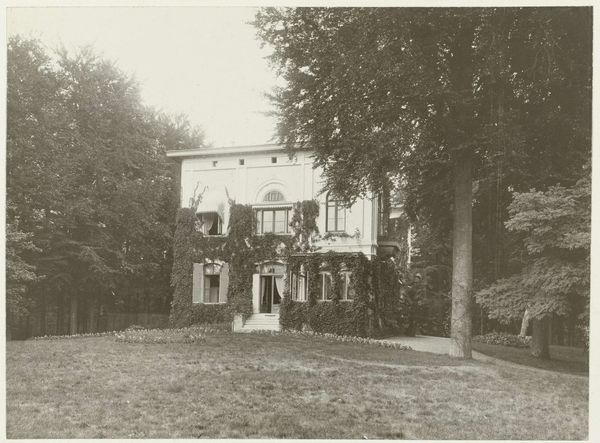
print, photography
#
portrait
#
print photography
# print
#
landscape
#
photography
Dimensions: height 6 cm, width 8.5 cm
Copyright: Rijks Museum: Open Domain
Editor: This is an intriguing black and white print, likely a photograph, titled "Two Young Women near a Villa," dating from around 1940-1945. It’s held at the Rijksmuseum, and depicts, well, two young women standing on a lawn in front of what seems like a stately home. It’s strangely… distant. What strikes you when you look at this, particularly considering the time period? Curator: Considering the possible dating of this photograph to the World War II era, I am immediately struck by the complex socio-political context in which it would have been created and consumed. The image's seeming normalcy – the idyllic villa, the women in an open field – sharply contrasts with the immense upheaval of the war. We should ask ourselves, what purpose did such imagery serve during times of conflict? Editor: That’s a good point. It almost feels like propaganda. Curator: It may not be overtly propagandistic, but the choice to depict a scene of normalcy could be seen as a subtle form of maintaining morale, and demonstrating resilience against outside turmoil. Furthermore, how was this photograph received, exhibited, or circulated? The role of institutions like the Rijksmuseum in preserving and displaying this work becomes crucial. What story does the museum’s decision to show it tell us? Editor: It's interesting how something that seems so simple opens up all these questions about the message, the audience, and even the museum itself. Curator: Exactly. And note that the choice of subjects – "two young women" – might hint at a reflection of wartime anxieties. Are they waiting? Hopeful? Perhaps the very vagueness invites contemplation on disruption and loss. I think by digging into who these women might have been, and whose gaze this image caters to, we unlock deeper readings about the experience of the everyday during wartime. Editor: I never considered the possibility that the photograph might be more than just what's shown in the picture. Thank you! Curator: Indeed, it highlights how art operates within networks of power, and influences cultural memory. Thanks to you too.
Comments
No comments
Be the first to comment and join the conversation on the ultimate creative platform.
